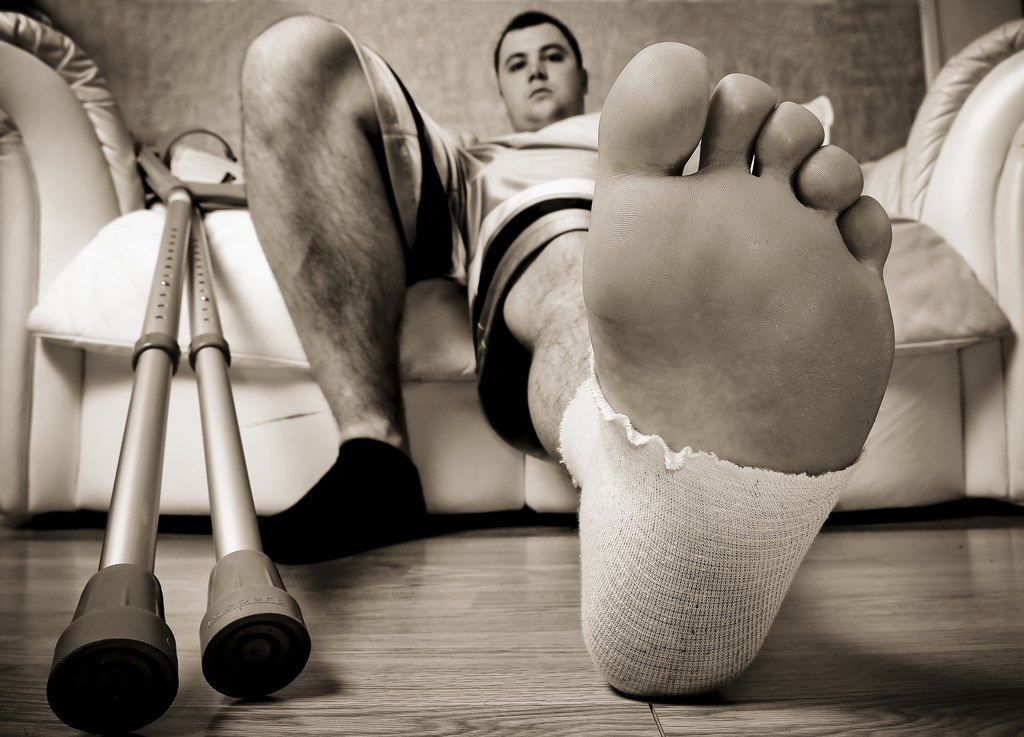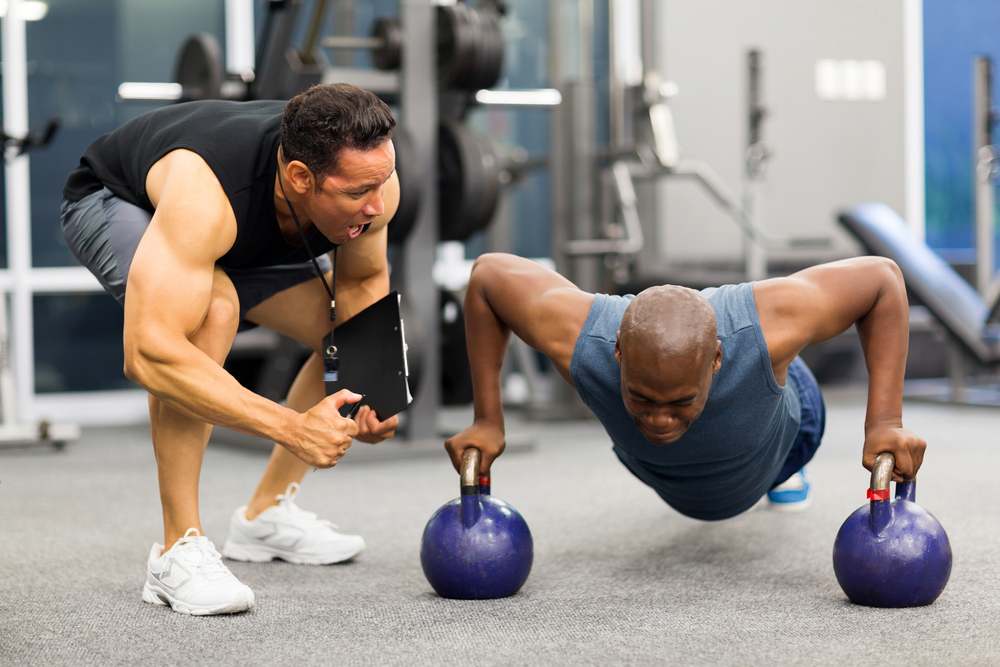In any case, injured tissues undergo physical and chemical changes that can cause inflammation, pain and diminished function for the sufferer, all in a short period of time, and can last indefinitely if not properly treated. Spinal manipulation, or chiropractic adjustment, of the affected joint and tissues, begins the process of restoring mobility, thereby alleviating pain and muscle tightness. This process permits tissues to heal naturally.
read moreWeekly News & Insights
IMMEDIATE INSTRUCTIONS IF INJURED
on August 8, 20191. If you get injured, STOP PLAYING IMMEDIATELY! This is an extremely simple concept that those who get injured can put into action immediately and easily. “Suck it up” and “Walk it off” are not good strategies for caring for an injury.
read moreInjury Prevention: Don't neglect your nutrition
on July 25, 2019INJURY PREVENTION: Don't neglect your nutrition
In general, food is often neglected or overlooked when, in fact, it should be the cornerstone of your routine. As an athlete, your body requires certain nutrients so that it can be prepared to perform at its best. That being said, don’t ever go out and grab the first diet/nutrition plan you see.
Everybody is different and so are athletes. What works for one may not work for another. I believe that having a customized nutritional program is your best bet to ensure that it’s tailored to your specific needs and your particular sport involvement.
Often poor nutrition is the cause of injury, and this type of injury doesn’t go away all by itself. These are the injuries that linger and you may never feel the same again if you don’t take proper action. Injury can also lead to chronic inflammation, which results in further injuries that your body can’t repair properly.
Its far more critical than you know
In short - make sure that you eat the right foods. It’s far more critical than you know. If you don’t have the right nutrients to perform your energy levels will be low, and you may sustain an injury. If you don’t have the proper nutrition, it will be more difficult for you to recover after exercise or injury. If you get hurt and your nutrition doesn’t feed your cellular structure, the tissue can’t be repaired and that may lead to a whole slew of other problems. If the tissue doesn’t heal properly, it can’t perform at its optimum, and optimum performance is what you strive for in your sports involvement.
Then, when you try to push yourself through your routine exercises, like you always would, you might end up hurting yourself. Damaged tissue is an injury. When it comes to food, getting what you need, and getting it at the right time, in the right form, can help you avoid injury. If you do get hurt, the right food can help in the reparation of damaged tissues.
by Dr. Thomas M. Mitchell, D.C., CCSP | Owner, Clinic Director Chicago Institute for Health and Wellness Copyright © 2013
read moreUSING SPORTS AND EXERCISE TO BUILD STAMINA
on July 18, 2019If you are a newbie, planning to use sports to build stamina, or participating in a rigorous exercise program to build up your body strength, no matter what your age, here is some information you need to know. These are basic preventive measures to help you avoid injuries through warm ups, routine fitness check-ups and stamina-building exercises.
read moreInjury vs. Soreness - Know the difference
on July 11, 2019The first thing that you must understand is that there is a significant difference between an injury and physical soreness. As soreness is common, usually something you will feel directly after exercising, being in a game, or some other strenuous activity, you must become aware of what soreness feels like. It’s very different from an injury.
read moreInjury Prevention
on July 4, 2019From my viewpoint as a Chiropractic Physician who sees injuries daily, I think that statement is extraordinarily accurate. Wouldn’t you rather know how to prevent an injury than to deal with one after the fact, when you are in pain and suffering?
read moreResults-Driven Health Care for Baby Boomers - Session Four
on June 27, 2019Results-Driven Health Care for Baby Boomers - Session Three
on June 20, 2019Results-Driven Health Care for Baby Boomers - Session Two
on June 13, 2019Getting on Track: Physical Activity and Healthy Eating for Men
on June 6, 2019Take a minute to think about your weight, health, and lifestyle. Are you as fit and healthy as you would like to be? Do you think you might be carrying a little too much weight or body fat?
You can get on track with regular physical activity and healthy eating habits. By making small changes to your lifestyle, you may become leaner and energetic.
Keep reading for tips on how to get on track with healthy habits—chances are, you will find that it is not as hard as you thought.
What is a healthy weight?
Body mass index (BMI) is a tool that is often used to determine if a person is a healthy weight, overweight, or obese, and whether a person’s health is at risk due to his or her weight. BMI is a ratio of your weight to your height. You can refer to the chart below to find your BMI and see what a healthy weight range is for your height.
A BMI of 18.5 to 24.9 is considered healthy. A person with a BMI of 25 to 29.9 is considered overweight, and a person with a BMI of 30 or more is considered obese.
Another way to determine if your health is at risk because of your weight is to measure your waist. Waist measurement does not tell if you are overweight, but it does show if you have excess fat in your stomach. You should know that extra fat around your waist may raise your health risks even more than fat elsewhere on your body. Also, men are more likely than women to carry their extra weight around their stomach.
Men whose waists measure more than 40 inches may be at an increased risk for diabetes, high blood pressure, stroke, and other problems.
A downside of using BMI is that it does not take into account whether body weight is due to muscle or fat. Therefore, someone who is very muscular may be thought to have excess fat, even if he has low or normal body fat. For the vast majority of Americans, though, BMI is a good way to tell if you have increased health risks due to your weight.
Why do weight and lifestyle matter?
Being overweight, obese, or physically inactive may increase your risk for:
- coronary heart disease
- type 2 diabetes
- high blood pressure
- stroke
- some types of cancer, including colorectal and kidney cancer
On the other hand, being active, eating healthier, and achieving and staying at a healthy weight may help:
- Improve mood and energy levels.
- Increase fitness and strength.
- Improve muscles.
Read full article: https://www.niddk.nih.gov/health-information/weight-management/keeping-active-healthy-eating-men
read more












